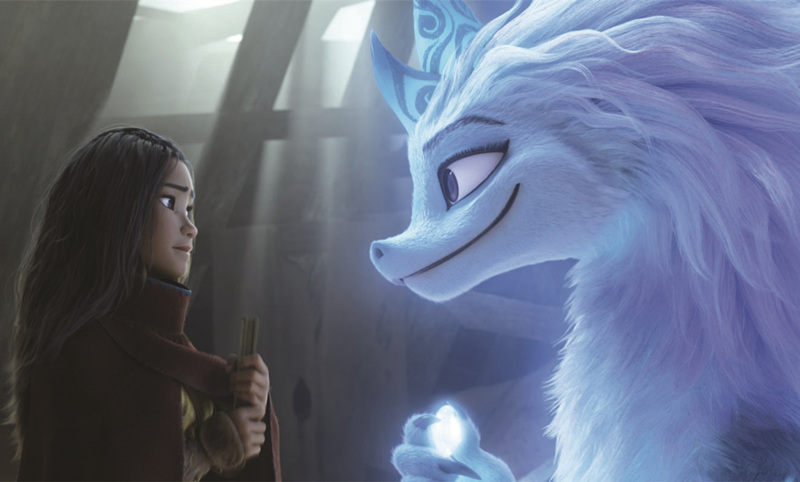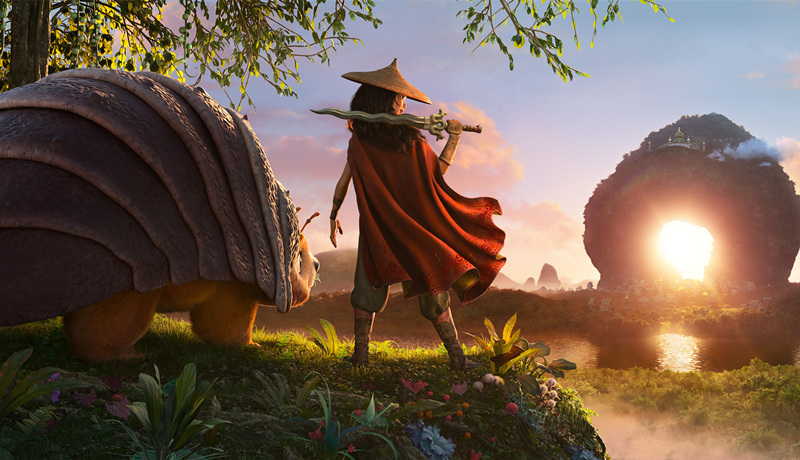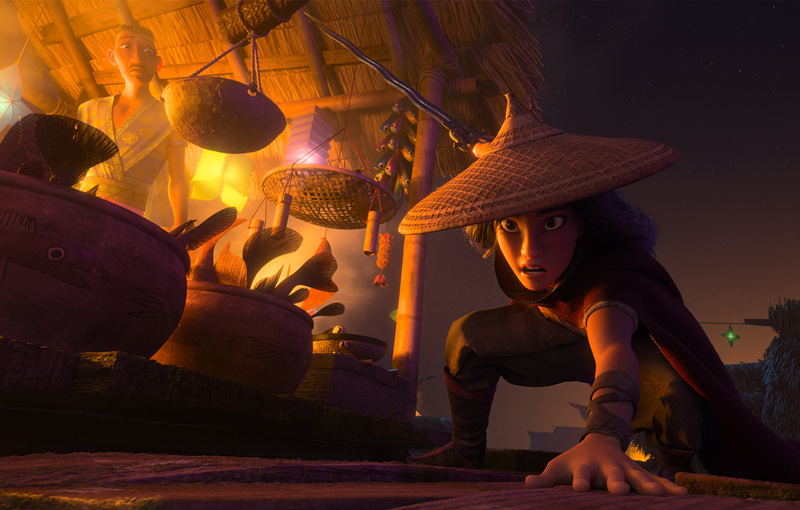Disney's new female-lead animation turns eyes to Southeast Asia
- By Zhang Rui
 0 Comment(s)
0 Comment(s) Print
Print E-mail China.org.cn, March 4, 2021
E-mail China.org.cn, March 4, 2021
Apart but united, Disney's new critically acclaimed animated feature "Raya and the Last Dragon" was made remotely due to the COVID-19 pandemic, and with strong Asian elements.

The film from Academy Award-winning director Don Hall, Carlos Lopez Estrada, Paul Briggs and John Ripa, tells the story of a lone warrior, Raya, who must track down the legendary last dragon to stop an evil force returning after 500 years to threaten her home - Kumandra, a fantasy world where humans and dragons once lived together in harmony.
Raya's journey in the film takes her through the five lands of Kumandra, a world in the shape of a dragon. Each land has its own physical characteristics and each clan its own ethos; thus, in essence, the filmmakers were creating five completely different environments with varying structures and topography, each filled with people clothed and styled differently.
As the first Disney film to have a Southeast Asia setting, it is inspired by the cultures and people of the region. As the artists and filmmakers designed the look of the various lands of Kumandra, they were inspired by fabrics, colors and decor suggestive of the region to build a sense of reality and relatable authenticity to the film, with particular attention to tradition and customs.

As the story of Raya's journey evolved over the years of developing the film, a theme of unity and togetherness began to emerge, being further honed and defined when directors Don Hall and Carlos Lopez Estrada came on board.
"There had been some great exploration by the team into the concept of unity and togetherness," said Hall. "However, Carlos and I felt that honing in on the trust required to achieve unity would lay a firm groundwork from which to make every decision in our lead character's journey."
And there's an iconic symbol from Asian culture: the dragon. Screenplay writer Qui Nguyen, offered insight into Sisu, the legendary water dragon, who is integral to the story. "The East has a very strong love and affection for dragons, but these are very different from what you see in 'Game of Thrones', for example. They mean luck. They signify life-affirming powers and fortitude, and those aspects were important to expand on since Raya is a Southeast Asian-inspired heroine. Sisu is highly revered and super powerful, but at the same time, we wanted to subvert our expectations of what a dragon could be like."
Throughout the making of the movie, filmmakers consulted with a group consisting of anthropologists, architects, dancers, linguists, and musicians, a group the filmmakers call the Raya Southeast Asia Story Trust. They provided invaluable assistance to the entire production team throughout the making process of the film.
Two groups of filmmakers even made research trips throughout Southeast Asia - including Laos, Indonesia, Thailand, Vietnam, Cambodia, Malaysia and Singapore - in order to experience the cultures. The research trips became a profound experience for those within the team who had never visited Southeast Asia in such an immersive way before.

"We're making a movie that is inspired by the cultures of Southeast Asia, and we wanted to ensure that aspect, when people from the region see this," director Estrada said. "And they can feel the love and respect the team had for the incredible real places that inspired us. We worked hard to make sure that this world we created feels dynamic, that the inspirations affecting the story really come through and that nothing is lost. We want to pay tribute to these cultures."
The film features the voices of many actors and actresses of Asian descent, including Kelly Marie Tran, Awkwafina, Sandra Oh, Daniel Dae Kim, Benedict Wong, Ross Butler and Gemma Chan. The Chinese version casts famous actress Zhao Liying providing the voice of Raya.
Nearly all the shot production for the film took place from the homes of more than 450 artists and crew members. In total, more than 900 Walt Disney Animation Studios employees worked remotely contributing to this film and other upcoming projects. As Raya joins Disney's collection of culturally iconic female characters, the film also boasts an all-female technical leadership team, which oversees all technology needs for the film, ensuring the artists have the tools and technical resources they need to achieve the directors' vision.
When audiences sit down to watch "Raya and the Last Dragon," filmmakers hope that they will be swept into the fantastical lands of Kumandra and mentally join Raya on her courageous journey of hope and self-discovery.
Co-director Paul Briggs said, "I want my son, and my grandson, and my great-great grandchildren to understand that this film is about the need for trust in each other so that we can come together to make this world a better place."

Producer Osnat Shurer agreed. She said, "divisiveness in the world and the need to come together for the greater good, despite our differences, is something that is top of mind for so many of us. We all are excited to bring out a film that provides a space for that conversation."
On the film review aggregator website Rotten Tomatoes, "Raya and the Last Dragon" has already received a high approval rating of 96% based on 114 reviews. It will be released simultaneously in Chinese and American theaters and on Disney+ with Premier Access on March 5, 2021.






Go to Forum >>0 Comment(s)